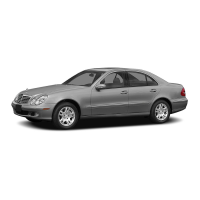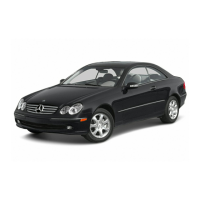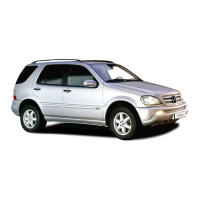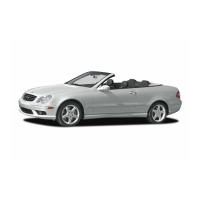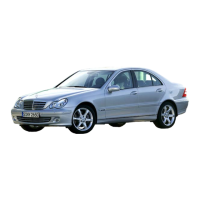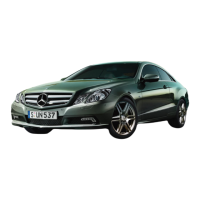
 Loading...
Loading...
Do you have a question about the Mercedes-Benz 2004 E-Class OCS and is the answer not in the manual?
| Brand | Mercedes-Benz |
|---|---|
| Model | 2004 E-Class OCS |
| Category | Automobile |
| Language | English |
Recommendations for genuine parts and approved accessories for vehicle compatibility and safety.
Information on operating the vehicle, safety instructions, and model variations.
Details about warranties covering the Mercedes-Benz vehicle, including new car and emission warranties.
Crucial information and warnings for safe operation and handling of the vehicle.
Key facts about restraint system components, including seat belts, airbags, and child restraints.
Explanation of driving safety systems like ABS, BAS, ESP, SBC, and 4MATIC.
Details on the immobilizer, anti-theft alarm system, and tow-away alarm features.
Comprehensive guide on operating the SmartKey, KEYLESS-GO, and central locking system.
Information on seat adjustment, easy-entry/exit feature, head restraints, and climate functions for seats.
How to use the control system via the multifunction steering wheel to access vehicle information and settings.
Information on driving with an automatic transmission, gear selector lever, shift programs, and one-touch gearshifting.
Explanation of driving systems like cruise control, Distronic, Airmatic, and Parktronic system.
Information on storage compartments, parcel net, glove box, cup holders, and ruffled storage bags.
Guidance on driving sensibly, saving fuel, and general driving practices.
Instructions for refueling the vehicle, checking fluids, and proper operation at a gas station.
Information on opening and closing the hood, checking engine oil, and related components.
Guidelines for tire maintenance, including checking pressure, wear, rotation, and replacement.
Recommendations for winterizing the vehicle, using winter tires, snow chains, and block heaters.
Details on the Flexible Service System PLUS (FSS PLUS) and service indicator management.
Instructions for cleaning and caring for the vehicle's exterior and interior components.
Troubleshooting guide for various warning and malfunction messages in the instrument cluster and display.
Procedures for unlocking and locking the vehicle using the mechanical key or SmartKey in emergencies.
Step-by-step instructions for replacing front and rear exterior light bulbs.
Procedures for handling a flat tire, including using the spare wheel, mounting, and inflating it.
Instructions and safety precautions for jump-starting the vehicle's battery.
Guidelines and precautions for towing the vehicle, including different methods and safety measures.
Technical specifications for the engine, including displacement, bore, stroke, and output.
Information on recommended tire sizes, types, wheel offsets, and speed ratings for various models.
Capacities and types of fuels, coolants, lubricants, and other fluids required for the vehicle.
Definition of the Antilock Brake System and its function.
How the control system is used to access vehicle information and change settings.
Definition of Distronic adaptive cruise control for maintaining speed and distance.
